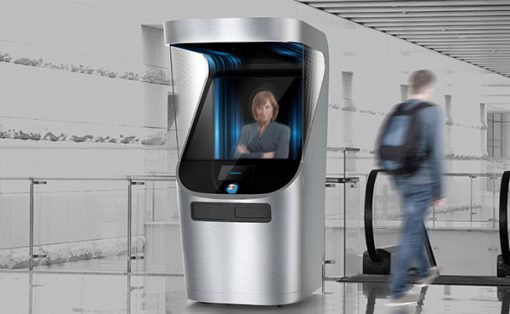When it comes to locomotive robots, we’re used to seeing those that have wheels, treads, or multi-legged designs. That’s our traditional view of robots, especially when they’re tasked with carrying loads, transporting objects, or navigating environments that are hazardous or inaccessible to humans. These familiar designs have proven effective in a range of applications but the field of robotics is undergoing a period of rapid innovation, with researchers and engineers actively experimenting with unconventional forms of movement. These new approaches are pushing the boundaries of what robots can achieve, enabling them to tackle challenges and navigate terrains that would be difficult or impossible for traditional robots. As a result, we are beginning to witness the emergence of robots that can jump, slither, hop, or even fly.
Researchers at UC Berkeley have introduced something unique in the robotics world: a tiny pogo robot that bounces its way forward with remarkable agility and efficiency. This robot is called SALTO, which is short for Saltatorial Locomotion on Terrain Obstacles, and is able to do more even with just one leg to stand on, so to speak. Taking their inspiration from jumping animals like the bush baby or galago, the engineers were able to make this leap, land, and rebound in quick succession while still maintaining balance and direction.
Designer: UC Berkeley

Unlike conventional robots that stride or roll, SALTO exploits a pogo-stick-like mechanism. It uses a precision-controlled motor and spring system to generate powerful, controlled jumps. After each landing, it rapidly resets and launches itself again, allowing it to traverse complex terrain with a speed and nimbleness uncommon in machines its size. It can jump up to one meter high as if it’s flying through the air and it’s fast enough to compare to small animals. Because of advanced algorithms, it’s able to control the direction and trajectory even when they’re mid-flight. The single-legged design also makes it energy-efficient.



Robots like SALTO could revolutionize how machines are used in search and rescue, exploration, and inspection tasks. Their ability to hop over debris, gaps, or rough terrain might make them invaluable in environments where wheels or multiple legs would get stuck or prove unwieldy. In practical terms, this means a robot could, for example, navigate collapsed buildings after an earthquake or traverse Martian landscapes in ways that traditional rovers cannot. While it’s still in its research project phase, this has a huge potential in terms of radically different designs in robotics. With ongoing advancements, such pogo-inspired robots could soon be deployed in real-world applications, pushing the boundaries of what robots can do—and where they can go.








